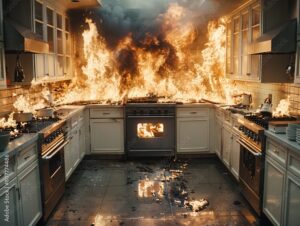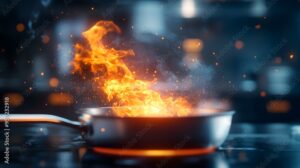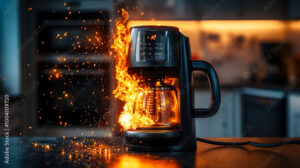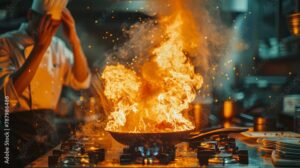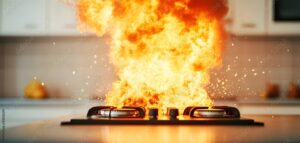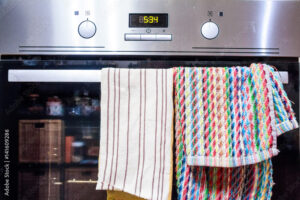Cooking at home is a rewarding experience that brings families and friends together. However, it also comes with responsibilities, particularly regarding safety. Cooking-related fires are one of the leading causes of house fires but being vigilant and informed can prevent them. This guide is designed to help home cooks, parents, and apartment dwellers understand how these fires occur and how to avoid them.
Common Causes of Cooking House Fires
1. Unattended Cooking
The most common cause of kitchen fires is leaving cooking unattended. It’s easy to get distracted, but leaving a hot stove or oven without supervision can quickly lead to a fire.
2. Grease Fires
Cooking with oils and fats at high temperatures has the potential to ignite. Grease fires can be particularly dangerous as they can spread rapidly.
3. Flammable Objects Near Heat
Keeping flammable items such as dish towels, oven mitts, and paper towels too close to the stove or oven can easily catch fire.
4. Faulty Appliances
Old or faulty kitchen appliances and equipment, such as frayed cords or malfunctioning stoves, can cause electrical fires.
5. Overheated Pots and Pans
Pots and pans left on heat for too long can overheat and ignite. Non-stick pans, in particular, should never be left empty on a hot burner.
How to Avoid Cooking House Fires
1. Never Leave Cooking Unattended
Stay in the kitchen while you’re cooking, especially when frying, grilling, or broiling. If you need to leave, even for a short period, turn off the stove.
2. Keep Your Cooking Area Clear
Ensure that flammable items are kept away from heat sources. Maintain a clean cooking area free from grease buildup, which can fuel a fire.
3. Be Prepared for Grease Fires
Never use water to put out a grease fire. Instead, cover the pan with a lid to smother the flames, turn off the heat, and if necessary, use a class B fire extinguisher.
4. Monitor Appliance Condition
Regularly inspect kitchen appliances for any signs of damage. Replace or repair faulty equipment and ensure cords are in good condition.
5. Use the Right Cookware
Stick to appropriate cookware for your stove, and never leave pots and pans empty on a lit burner. Ensure handles are turned inward to prevent spills.
6. Install and Maintain Smoke Alarms
Smoke alarms should be installed in and around the kitchen. Test them monthly and replace batteries annually to ensure they are functioning correctly.
Additional Safety Tips for Families and Apartment Dwellers
- Educate Children: Teach children about kitchen safety and establish rules about staying clear of hot surfaces and equipment.
- Have a Fire Extinguisher Nearby: Keep a fire extinguisher in the kitchen and ensure everyone knows how to use it.
- Plan an Escape Route: Discuss and practice a fire escape plan with your family or roommates.
- Communicate with Neighbors: In apartments, inform neighbors about safety protocols and establish a community safety network.
Cooking at home should be a joyful and safe experience. With vigilance and preparation, you can significantly reduce the risk of a fire in your kitchen. Stay safe and enjoy your culinary adventures!
For Tons of Great Free Information please hit “Like & Subscribe”
Websiteconstructionconsumeradvocacyinstitute.com
Podcastanchor.fm/galloway
www.youtube.com/@ConstructionConsumerAdvocacy

